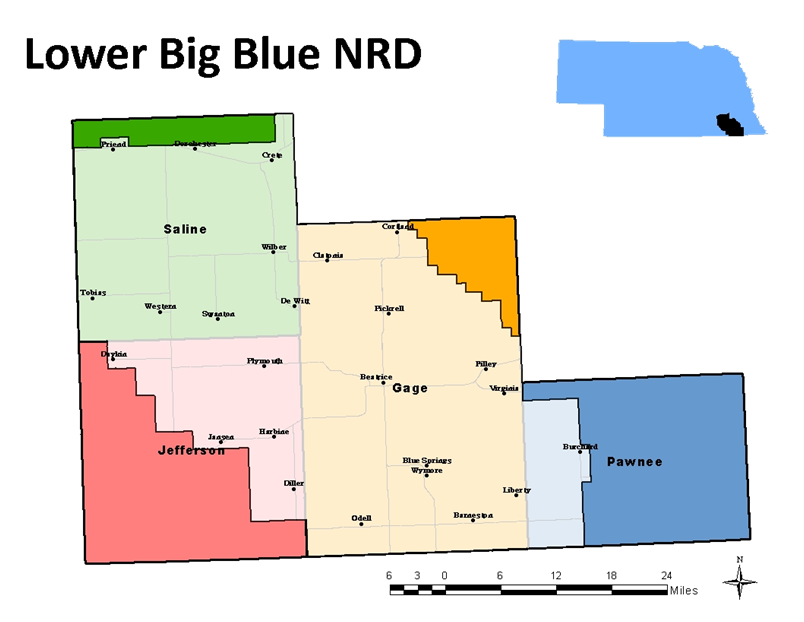Managing Irrigation water is essential. Monitoring soil moisture helps the grower maximize irrigation efficiency and minimize costs, while at the same time, it will help draw the most yield out of your crops. The Lower Big Blue NRD along with partners at the UNL Extension office can supply you with the necessary irrigation scheduling equipment. If you have a different soil monitoring device, just ask, and we may cost-share on those devices as well! The NRD will cost-share on irrigation scheduling equipment at 50% of cost up to $300.00 per landowner per year. Deadline for cost share is March 31st.
| |
| |
Use the Crop Water App with your moisture sensors! Visit  CROPWATCH from UNL's Institute of Agriculture and Natural Resources to learn about the app!
CROPWATCH from UNL's Institute of Agriculture and Natural Resources to learn about the app!
| |
| |
The farmers we have been working with report water savings for corn averaged 2.6" while soybean water savings averaged 2.1". This saves water, fuel, and labor.
Payback is immediate by saving that first round with a pivot at the beginning of the irrigation season and/or saving an irrigation again at the end of the growing season.
In "Over Irrigation Costs More Than Fuel and Labor" Dr. Suat Irmak, University of Nebraska Water Resource Specialist, says that research conducted at Clay Center showed irrigation at 125% of ET (Evapotranspiration) reduced yield 11.5 bushels per acre per year.
Irriagation water savings can have positive impacts down the road for our area.
Do you need a soil probe tool?
Maximize your cost share by ordering a data logger every year to replace hand held readers for convenience.
Replace any bad sensors. Check them in a bucket of water now. If they don't read under 10 cb throw them away and get new ones.
Do you have enough sensors to do two stations per pivot?
Watermark sensors are installed 1ft, 2ft, and 3ft deep in the soil with a soil probe which comprises one sensing station. My recommendation is to have two station per pivot or furrow irrigated field or a total of six sensors per field and a hand held reader. With today's economic situation, getting extra management information on soil moisture status is a no brainer, especially on the first and last irrigation decision making.
Make sure and order a consultants tube and soil probe to get the best soil sensor installations. For first year cooperators, a soil probe is not required as we (NRD/Extension) will help you install the equipment and train you how to use it.
A hand held reader allows you to take real time soil moisture measurements in any field. Data loggers can provide more convenience while taking readings and year-end readings can be saved on a computer.
If you already have an ET gauge, make sure and ask about replacing the white membrane and canvas cover.
Information courtesy of Randy Pryor and Paul Hay, University of Nebraska Extension

| |

